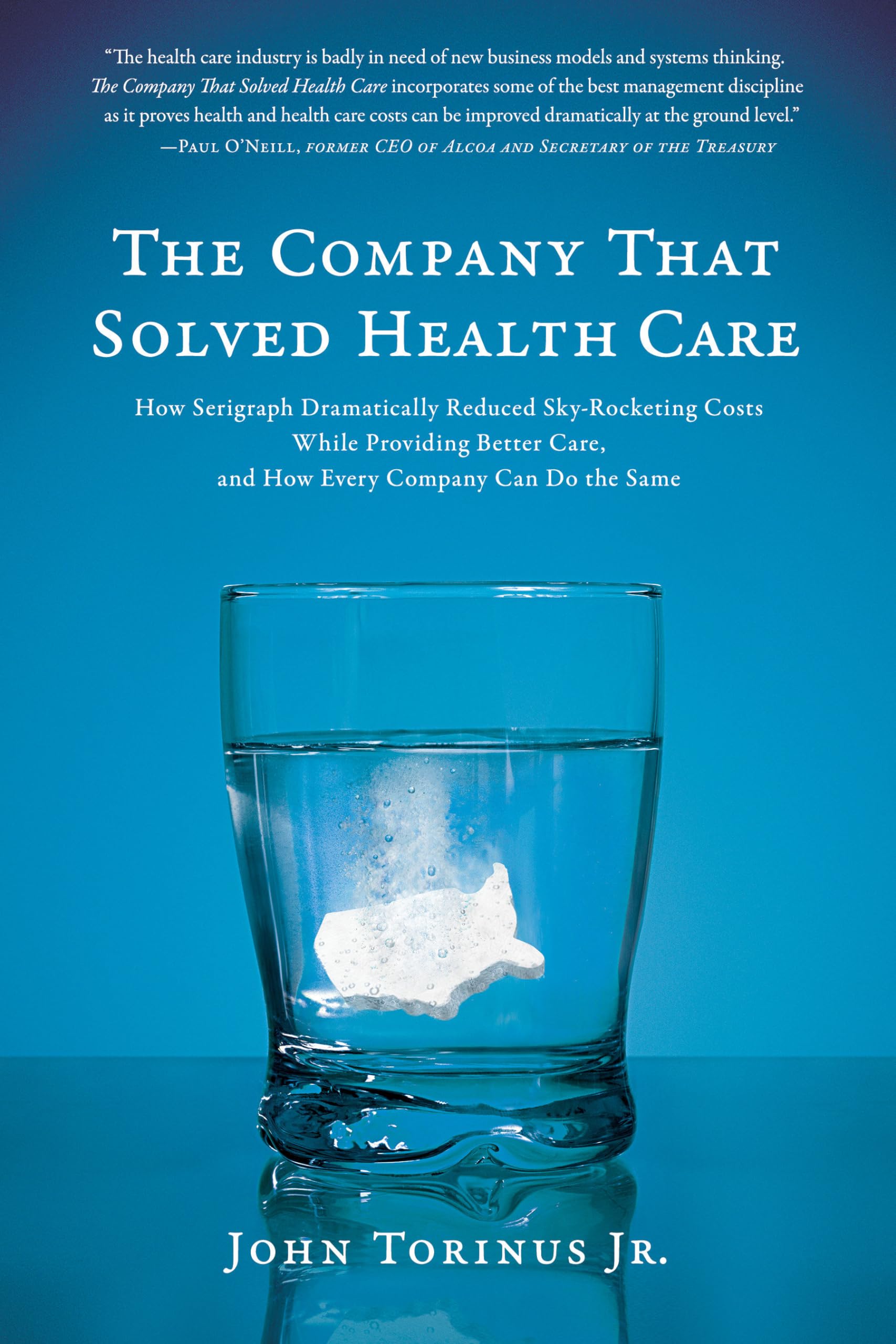Customer Services
Copyright © 2025 Desertcart Holdings Limited
Desert Online General Trading LLC
Dubai, United Arab Emirates


The Company That Solved Health Care: How Serigraph Dramatically Reduced Skyrocketing Costs While Providing Better Care, and How Every Company Can Do the Same
J**.
Insightful Book
This book was very insightful even though it was written many years ago, it’s stood the test of time.
H**H
Reforming Thyself: Practical ways to reduce healthcare costs
Every executive or HR manager in self-insured plans with high deductibles should read this book. The book is a fast read and implementing just one of the many ideas found here will save any company thousands of dollars.Senior executives always complain about the rising cost of healthcare, but no one does anything about it. "Success" is defined as working with your benefits administrator so that the premium increase is "only 9%" this year and being happy that at least it's not a double digit increase.John Torinus is one executive who has not abdicated his responsibility in keeping healthcare costs down. Not accepting the standard premium increases at face value, John developed a program to provide transparency to health care costs and employee incentive programs that helped employees make consumer driven healthcare decisions. The result has been premium increases averaging <3% over the last 8 years, better quality of care and an engaged employee base.The Company That Solved Healthcare provides practical and real world suggestions about what self insured employers can do to manage their healthcare costs. For example, Torinus details what happens when employees know that a colonoscopy can cost $400 or $4000, depending on where they go for service. While you might not be able to afford to do everything that John has done (starting a primary care clinic on-site), this book contains many ideas about what companies can do to start actively managing their health care spending.
M**N
Good Ideas - Needs an Update
Lots of proven practical ideas for controlling health care costs at the corporate level. In fact many of the ideas can be applied to the broader economy. In fact, I shared some of the ideas with my US Senator in an e-mail about health care. Unfortunately business practices are changing all the time and while I trust that many of these ideas still apply, it would be good to get an update and see what the longer term impact has been. Hence my 4-star rather than 5-star rating.
J**E
Low on Theory, High on Practical Illustration
The tendency of anyone reading the book is to conclude "we could never do that!" Serigraph's story is well beyond replacing doughnuts with bran muffins in the break room. However, it didn't happen overnight. It was a process that included getting top management on board, tracking health metrics and purposefully creating a sense of crisis around the rising cost of health care.I finished the book in less than a day and within a week gave several copies away to business leaders. The Serigraph story of health and wellness is inspiring and provides practical examples of a company that has put a robust health and wellness plan into action. I didn't see a lot of theory in the book, but the sharing of experiences, including both failures and successes. I am confident CEOs, CFOs, HR professionals and business leaders of any size organization can gain practical insight in controlling health care costs, increasing employee engagement and implementing wellness via "The Company That Solved Health Care."
D**Y
This book has some great points
This book is basically a case study in Consumer Driven Health Care. The author hammers ad nauseum on the point of "having skin in the game," meaning the patients won't make an earnest attempt to control health care costs if they don't feel the money being spent is their own.He also drives home the point that when patients truly see how expensive their lifestyle choices are (smoking, being overweight, failing to follow a healthcare regimen recommended by a doctor, etc.), they make conscious choices to improve their health and therefore decrease their healthcare spending.The major thrusts of his health plan are rewarding patient responsibility and creating a true market for health care with competition based on price and quality. These are things I've been saying for years. I took away two stars because the author fails to address how his health plan affects people who have chronic health conditions that have nothing to do with their lifestyle choices (Type 1 diabetes, epilepsy, allergies, etc.).The main critics of consumer driven health care believe that families with children with these health conditions will be unable to afford care since the cost won't be as evenly distributed as it is under traditional health plans. This may or may not be true, but the author of this book didn't address it at all. I would think with the number of employees on his plan, he would have had experience with childhood diseases and "bad luck" and could shed some light on this situation.
Trustpilot
5 days ago
3 weeks ago